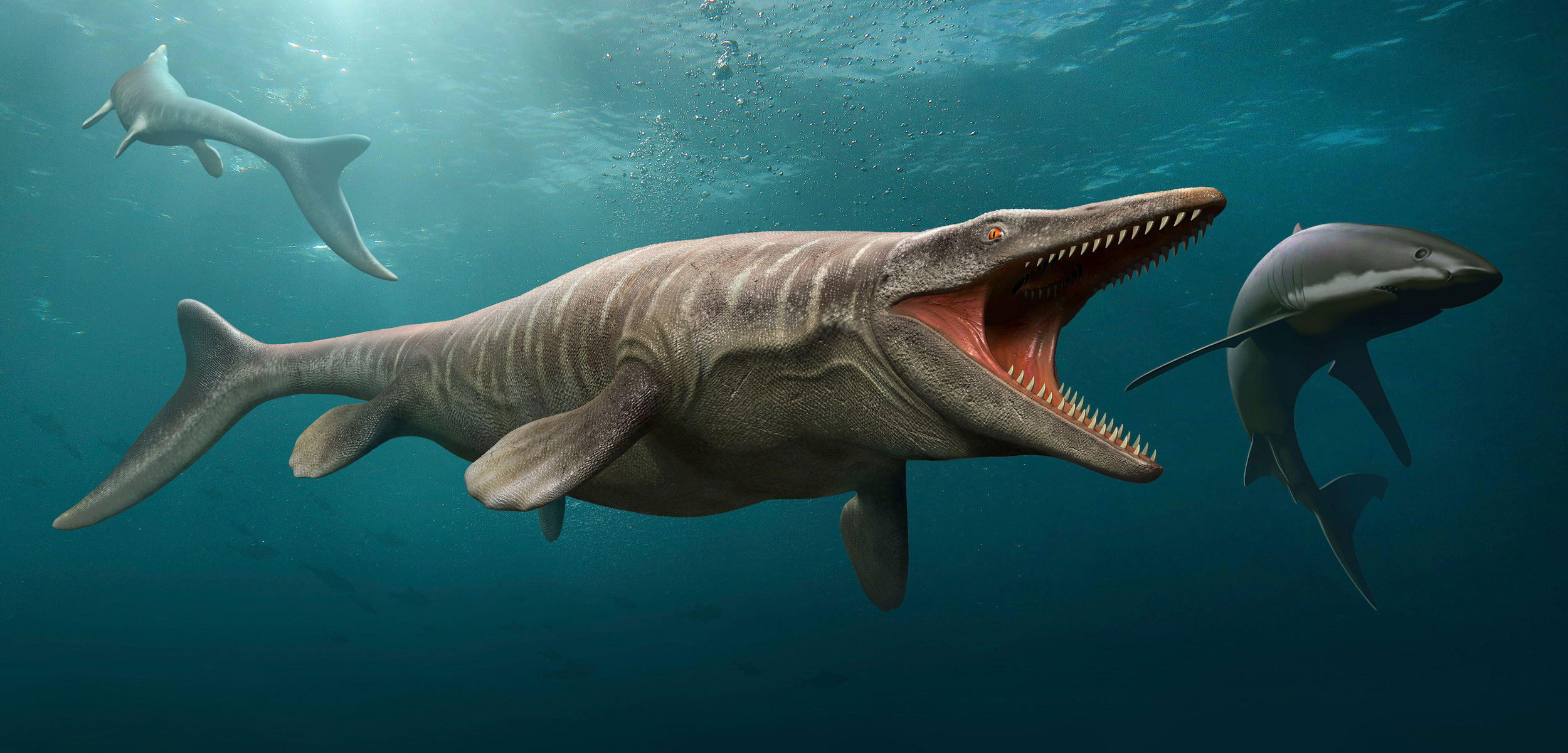Alabama’s Return to the Sea
A paleontological site shows how life endured in an Alabama that was almost fully submerged—and how it could again as the ocean rises.
Article body copy
Alabama’s Harrell Station, roughly 75 kilometers west of Montgomery and 250 kilometers inland from the Gulf of Mexico, seems like the last place someone would go to explore the ocean. But crumbling out of the dusty ground, which has been wrinkled into gullies of white chalk, are the remnants of an ancient sea. During the Late Cretaceous some 82 million years ago, high temperatures melted the polar ice caps submerging the world’s coasts. A shallow sea known as the Mississippi Embayment spilled out over the southeastern United States, blanketing much of Alabama. Harrell Station is one of the best places to glimpse this primeval sea.
Located on a belt of Cretaceous-aged rocks known as the Mooreville Chalk, the gullies at Harrell Station are brimming with the immaculately preserved fossilized remains of the reptiles that dominated this ancient sea. Compacted over time, and carved by eons of erosion, the powdery marl is composed of the crushed skeletons of microscopic algae known as coccolithophores combined with clay. As these plankton sank toward the ocean floor, they entombed larger sea creatures in stunning detail.
Since the 1940s, researchers have worked to exhume this fossilized bounty. To this day, they continue to uncover new species. Adiel Klompmaker, the curator of paleontology at the Alabama Museum of Natural History, which has owned and excavated a large swath of Harrell Station since 1991, likens the site to a Cretaceous time capsule. “We know so much about the late part of the Cretaceous because of Harrell Station,” he says.
The research has revealed that most denizens of the Mississippi Embayment were supersized—the largest sea turtle, Protostega, was nearly the size of a Volkswagen Beetle. Alongside these giant turtles, primitive sharks and giant coelacanths patrolled the deep while flocks of Pteranodons flapped overhead. The excavations have unearthed a string of showstopping discoveries—like a Pteranodon bone picked clean by sharks, and a dinosaur egg that had washed out to sea. Klompmaker stresses that the site’s understudied invertebrate fossils likely hold valuable secrets as well.
But Harrell Station’s main attraction is the mosasaurs. Relatives of modern monitor lizards—think a Komodo dragon crossed with a souped-up tiger shark—these fearsome predators terrorized the waters of the Mississippi Embayment. Nearly everything was on the menu for a mosasaur, including Xiphactinus, a fish nearly the size of a great white shark that resembled a snaggletoothed tarpon. Alabama appears to have been a mosasaur paradise—seven species have been uncovered at Harrell Station to date, making it among the richest mosasaur deposits in the world.
The site’s finely preserved fossils are also helping researchers reconstruct the oceanography of the Mississippi Embayment—with valuable insights for the modern world.
Paleontologist Leah Travis-Taylor, who is currently pursuing a doctoral degree at the University of Massachusetts Amherst, recently led an effort to calculate Alabama’s Cretaceous water chemistry. According to Travis-Taylor, details such as water temperature and salinity can be unlocked by examining the ratios of different oxygen isotopes trapped in the enamel of fossilized mosasaur teeth. These signals point to a steamy sea much saltier than the modern Gulf—telltale signs of a much warmer world. The greenhouse conditions of the Cretaceous also remain in the chalk itself. A 2008 effort to examine both oxygen and carbon isotopes from the Mooreville Chalk found that around 84 million years ago, when sea temperatures peaked at a piping 31 °C, the Mississippi Embayment submerged Alabama’s coastline, extending much farther inland than Harrell Station.
This connection between warming water and sea level rise troubles Klompmaker. “Harrell Station gives a warning,” he says. “It reminds us that sea levels can inundate vast amounts of the state of Alabama.”
This process is already playing out. A combination of sinking land and a warming Gulf means that Alabama is one of the states most at risk from sea level rise. The ocean has risen nearly 30 centimeters over the past 50 years, eating away at the state’s barrier islands and coastlines. Some people may like having beachfront property in northern Alabama, Klompmaker says jokingly, “but I think many people would disagree.”
Travis-Taylor agrees that the picture Harrell Station’s fossils paint of a waterlogged Alabama is troubling, but she also believes this fossil graveyard offers clues to understanding how modern sea creatures may adapt to changing conditions. “Mosasaurs lived in a warmer world, so they add an important perspective of how modern relatives of mosasaurs, like sea snakes, may be impacted in a warming world,” she says.
By examining the isotopes locked in fossilized mosasaur teeth, for example, Travis-Taylor recently deduced that these creatures, much like sea snakes, routinely traveled into fresh water along Alabama’s coast to drink and regulate the salt in their bodies. In a world beset by climate change, future sea snakes may adopt a similar strategy.
Which is the reason why paleontologists like Klompmaker and Travis-Taylor continue to plumb the chalk to view a greenhouse Alabama. At Harrell Station, “the ocean archive is well exposed on land,” Klompmaker says. He believes digging through this archive will help inform the state’s future.

